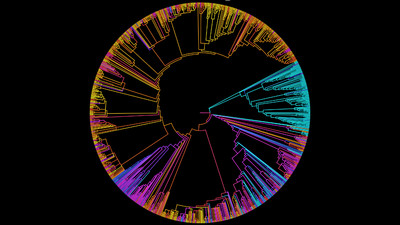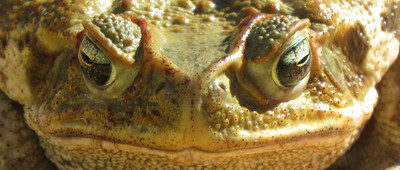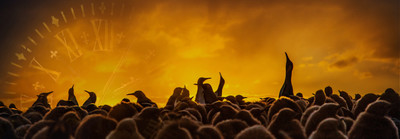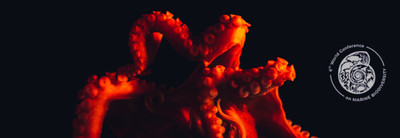PeerJ Section
Zoological Science
Welcome to your community’s home at PeerJ. Sections are community led and exemplify a research community’s shared values, norms and interests.
The citation average is 4.6 (view impact metrics).
32,596 Followers
Section Highlights
View all Zoological Science articles

31 October 2025
An update on captive cetacean welfare
"Welfare of animals in managed care is an extremely important issue and this is a quite detailed review of the current data."
 Jennifer Vonk, Section Editor
Jennifer Vonk, Section Editor
 Jennifer Vonk, Section Editor
Jennifer Vonk, Section Editor
9 October 2025
Scanning electron microscopy (SEM) reveals high diversity of setae on the hind tibiae and basitarsi of Peruvian Stingless Bees (Apidae: Meliponini)
"because of in-depth analysis of structure-function relationship of bee setae."
 Stanislav Gorb, Handling Editor
Stanislav Gorb, Handling Editor
 Stanislav Gorb, Handling Editor
Stanislav Gorb, Handling Editor
25 September 2025
Geographic distributions and patterns of co-occurrence among black-bellied and shovel-nosed salamanders (Desmognathus spp.) in the Great Smoky Mountains National Park
"This study presents new insights into the geographic distribution and co-occurrence of species within a highly cryptic salamander genus."
 Zoltán Tóth, Handling Editor
Zoltán Tóth, Handling Editor
 Zoltán Tóth, Handling Editor
Zoltán Tóth, Handling Editor
26 August 2025
Diurnal moths have larger hearing organs: evidence from comparative 3D morphometric study on geometrid moths
"This is a good example of a study on functional ecology based on a comparative study of moth species and their morphological sensory response to predation. It was evaluated how the predator activity pattern influences the phylogenetic development of the morphological organs involved in antipredator detection."
 Javier Manjarrez, Handling Editor
Javier Manjarrez, Handling Editor
 Javier Manjarrez, Handling Editor
Javier Manjarrez, Handling Editor
21 August 2025
Evaluating COI and ITS2 dual barcoding for molecular delimitation and taxonomic insights in Arenosetella Wilson, 1932 (Harpacticoida: Ectinosomatidae) along Turkish Coasts
"This elegant study provides a strong foundation for analyzing previously unnoticed cryptic diversity in interstitial copepods by employing a dual-marker DNA barcoding approach."
 Rony Huys, Handling Editor
Rony Huys, Handling Editor
 Rony Huys, Handling Editor
Rony Huys, Handling Editor
30 July 2025
New and known free-living nematode species (Nematoda: Chromadorea) from offshore tsunami monitoring buoys in the Southwest Pacific Ocean
"This is a good contribution to the systematics of marine nematodes. The editor particularly appreciated the originality of this work, with research in a very little studied environment, ocean buoys."
 Jean-Lou Justine, Handling Editor
Jean-Lou Justine, Handling Editor
 Jean-Lou Justine, Handling Editor
Jean-Lou Justine, Handling Editor
10 July 2025
A Jack of All Trades—Tawaki/Fiordland penguins are able to utilise diverse marine habitats during winter migration
"The study provides new and relevant information on penguin migration."
 Javier Manjarrez, Handling Editor
Javier Manjarrez, Handling Editor
 Javier Manjarrez, Handling Editor
Javier Manjarrez, Handling Editor
7 July 2025
Inter-colony and inter-annual behavioural plasticity in the foraging strategies of a fjord-dwelling penguin—good news in the face of environmental change?
"The article provides valuable biological information on the impact of environmental changes on the foraging habits of the penguin species studied."
 Javier Manjarrez, Handling Editor
Javier Manjarrez, Handling Editor
 Javier Manjarrez, Handling Editor
Javier Manjarrez, Handling Editor
13 June 2025
Adapting the facial action coding system for chimpanzees (Pan troglodytes) to bonobos (Pan paniscus): the ChimpFACS extension for bonobos
"Facial Action Coding Systems (FACS) are widely recognized as the gold standard for studying facial muscle movements in animals. Until now, the absence of a bonobo-specific FACS has been a significant limitation, especially given the species' relevance to evolutionary questions about primate communication. This study addresses that gap by introducing a reliable tool for analyzing bonobo facial expressions. By extending the AnimalFACS framework to bonobos, it not only enhances our understanding of their communication but also enables more robust cross-species comparisons in the study of facial expressions."
 Cédric Sueur, Handling Editor
Cédric Sueur, Handling Editor
 Cédric Sueur, Handling Editor
Cédric Sueur, Handling Editor
11 June 2025
Interpopulation morphological differences and sexual dimorphism of Dekay’s brownsnake (Storeria dekayi) along a rural–urban gradient
"There is a lack of research on trends in urban reptile ecology, especially snakes, across all regions, lineages, and research topics. This study reinforces the need to improve our knowledge and research efforts on this topic."
 Javier Manjarrez, Handling Editor
Javier Manjarrez, Handling Editor
 Javier Manjarrez, Handling Editor
Javier Manjarrez, Handling Editor
32,596 Followers






